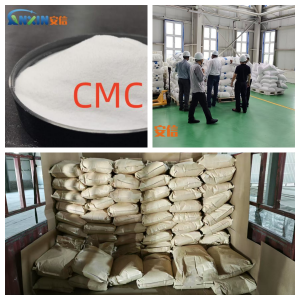Sodium carboxymethyl cellulose (CMC) is a common water-soluble polymer derivative. Due to its excellent thickening, film-forming, suspending, stabilizing, and water-retention properties, it is widely used in food, pharmaceuticals, cosmetics, petroleum, building materials, and daily chemicals.
1. Thickening and Rheology Control
CMC has strong thickening properties, significantly increasing system viscosity at low concentrations, thereby improving product flow and feel. In food formulations, it is often used in beverages, jams, ice cream, and other products to achieve the desired consistency and smooth mouthfeel. In cosmetics and daily chemicals, CMC can impart stable rheological properties to emulsions, detergents, or gels, preventing them from being too thin while maintaining good spreadability and ductility.
2. Stabilizing Dispersed Systems
In many formulations, ingredients exhibit poor compatibility or tend to settle, such as suspended particles, emulsified oils, or powders. CMC, with its long molecular chains and negatively charged groups, can form a protective layer within a system, preventing particle aggregation and sedimentation, thereby maintaining uniform dispersion. For example, it prevents fruit pulp from sinking in beverages and ensures uniform drug efficacy in pharmaceutical suspensions.
3. Water Retention and Film-Forming Properties
CMC molecules contain carboxymethyl groups, which are highly hydrophilic and effectively bind water, thereby enhancing the system’s moisture retention capacity. In foods, it can prevent moisture loss in pasta, meat, or frozen foods, extending their shelf life. In cosmetics, it is often used as a humectant to help maintain skin’s hydration. Furthermore, CMC forms a transparent, flexible film upon drying, making it important in tablet coatings, cosmetic film formulations, and coating systems.
4. Improving Product Texture and Mouthfeel
In food formulations, CMC is not only a viscosity modifier but also contributes to texture improvement. For example, in ice cream, it prevents ice crystal formation, creating a smooth texture. In baked goods, it improves dough moisture retention and stability, making the finished product softer and extending shelf life. In jams and jellies, it imparts a desired gel texture and smoothness.
5. Synergistic Effects and Cost Optimization
CMC is often used in combination with other colloids or thickeners (such as xanthan gum, guar gum, and konjac gum) to achieve a synergistic thickening and stabilizing effect. This not only improves formulation performance but also helps reduce raw material usage and lower production costs. For example, in beverages and sauces, CMC combined with xanthan gum creates a more stable suspension system, preventing separation.
6. Safety and Wide Applicability
As a derivative derived from natural cellulose, CMC exhibits excellent biocompatibility and safety, and is approved for use in numerous food pharmacopoeias and regulatory bodies. Its non-toxic and non-irritating properties make it particularly valuable in formulations requiring stringent safety requirements, such as pharmaceuticals, foods, and cosmetics.
7. Special Roles in Specific Industries
Food Industry: Stabilizes emulsions, improves texture, preserves freshness, and thickens.
Pharmaceutical Industry: Used as a tablet binder, disintegrant, or suspension stabilizer.
Daily Chemical Industry: Prevents powder sedimentation in toothpaste, improving paste smoothness and uniformity.
Petroleum Industry: Used as a rheology modifier and filtration additive in drilling fluids.
Building Materials Industry: Improves water retention and workability in cement mortar.
The importance of CMC in formulations lies not only in its single function but also in its ability to comprehensively improve the physical and chemical properties of a system: from consistency adjustment, stable dispersion, moisturizing and film formation, to enhancing texture, extending shelf life, and optimizing costs. For this reason, CMC has become an irreplaceable multifunctional additive in formulation design across numerous industries. Its excellent performance and safety ensure that it will continue to play a key role in the future development of green and environmentally friendly materials and high-performance formulations.
Post time: Sep-12-2025

